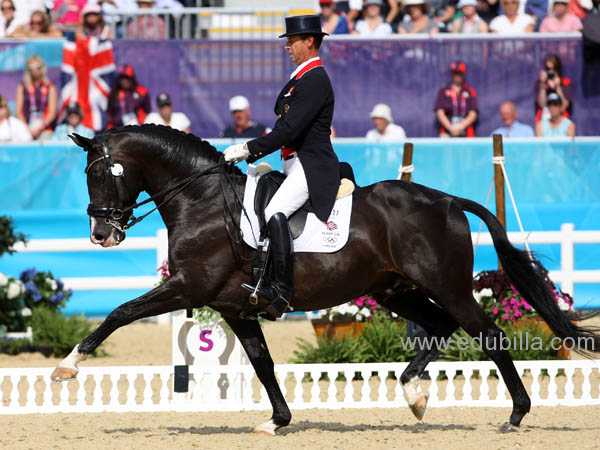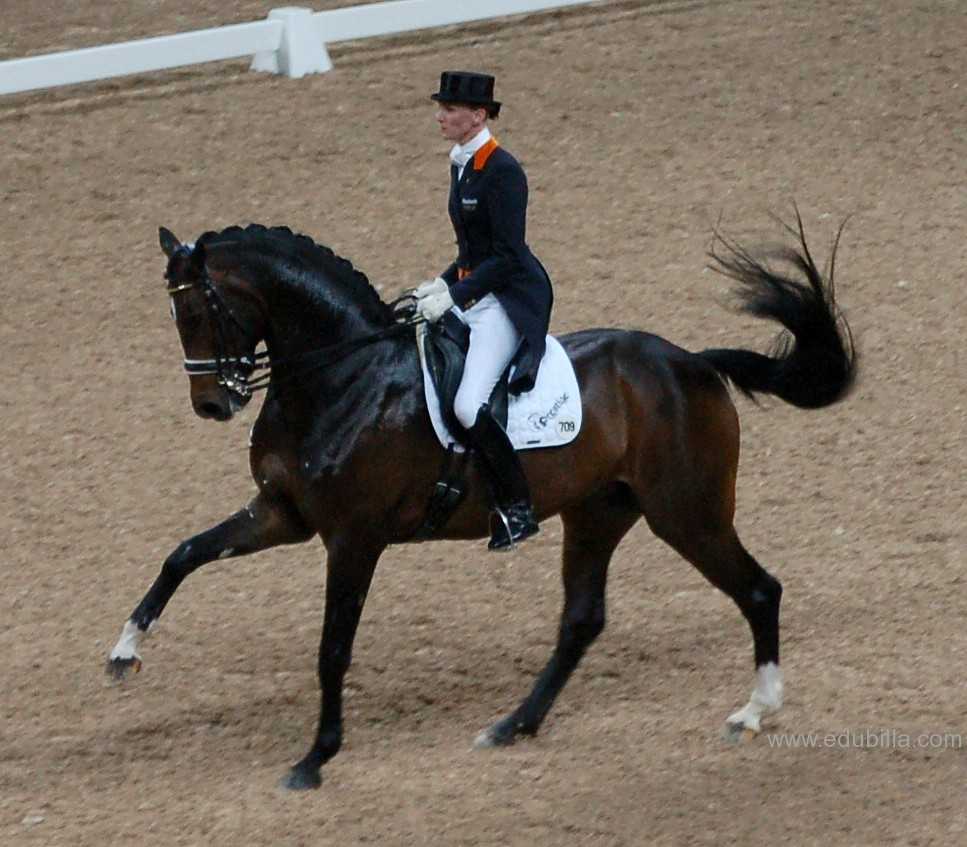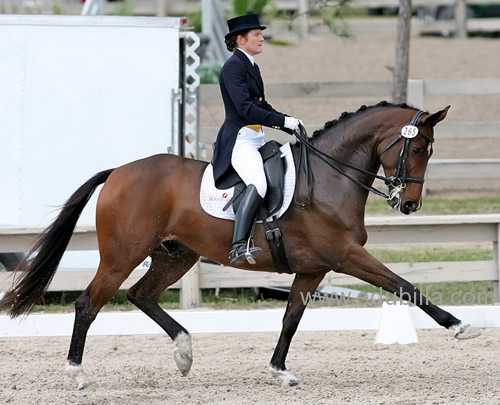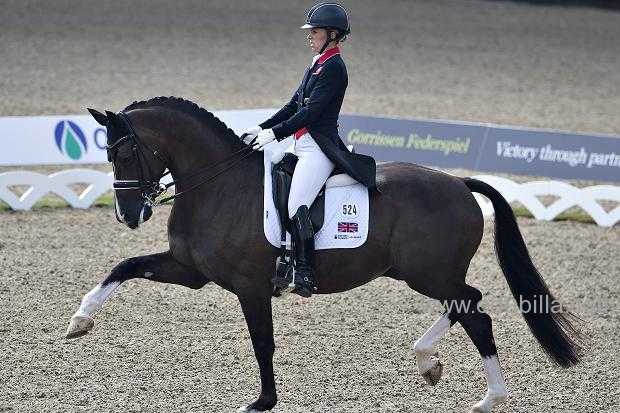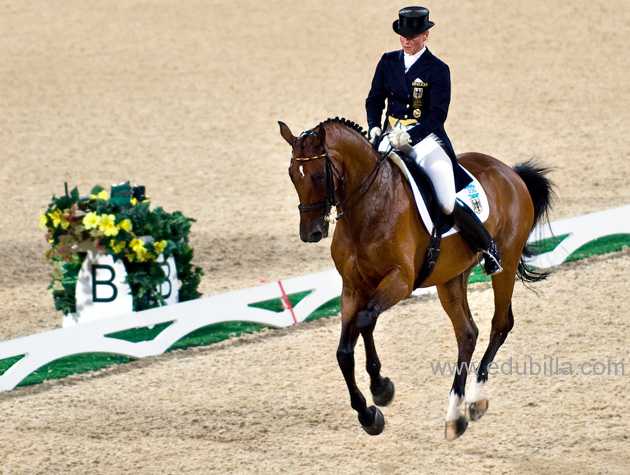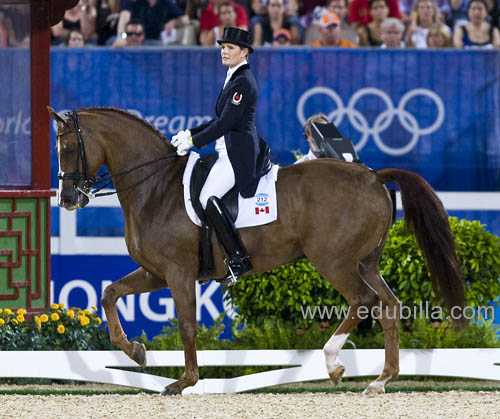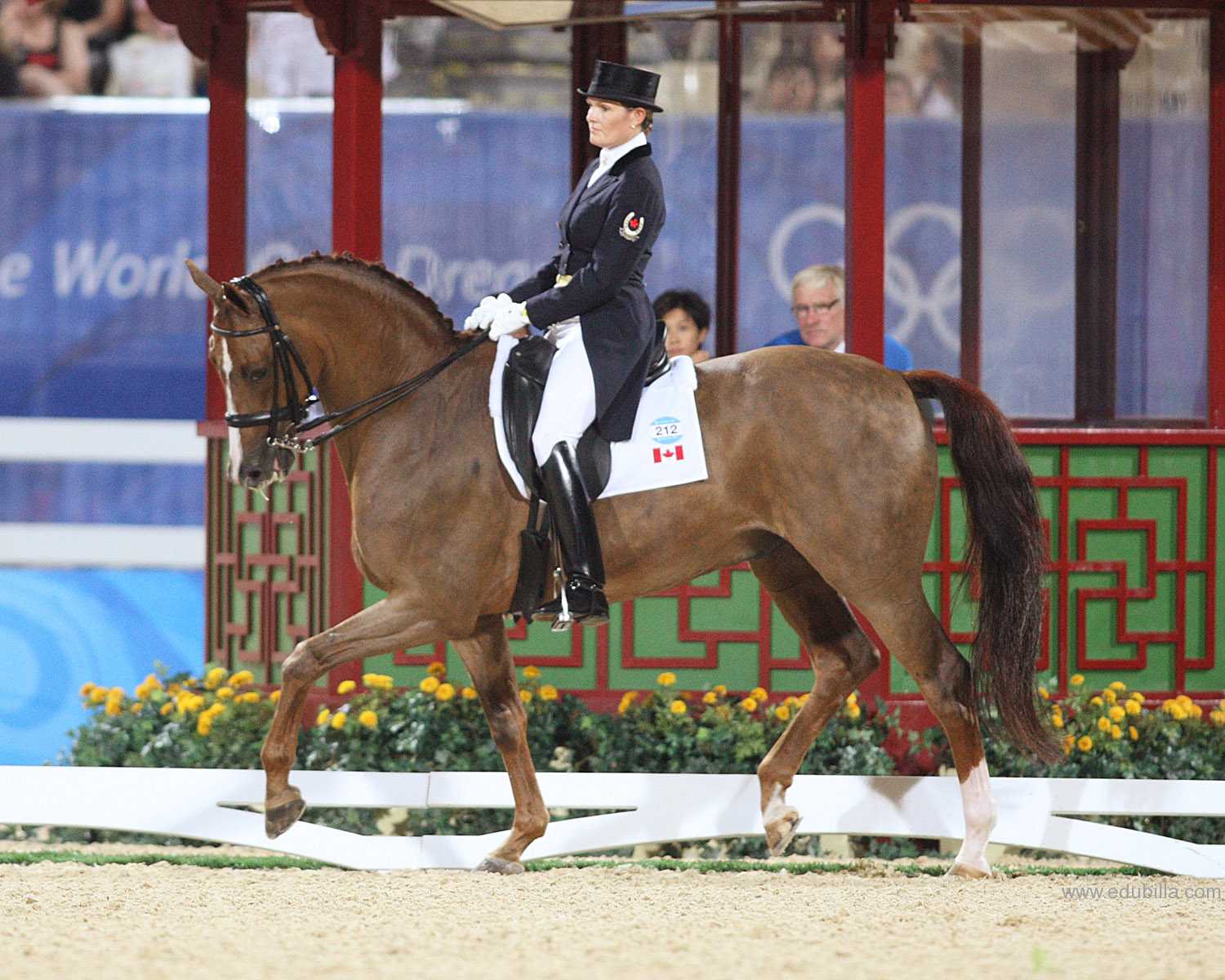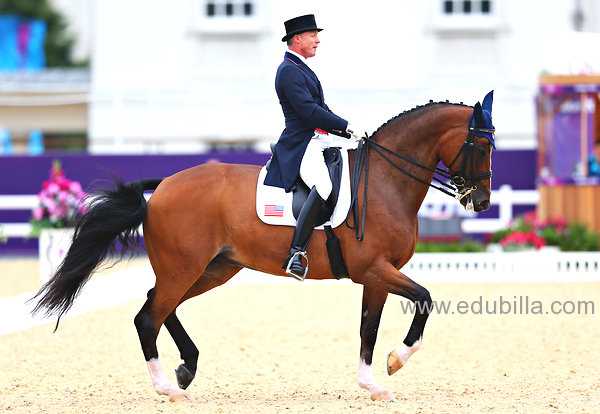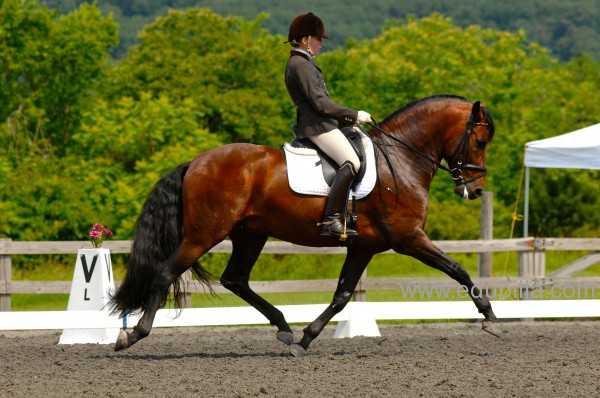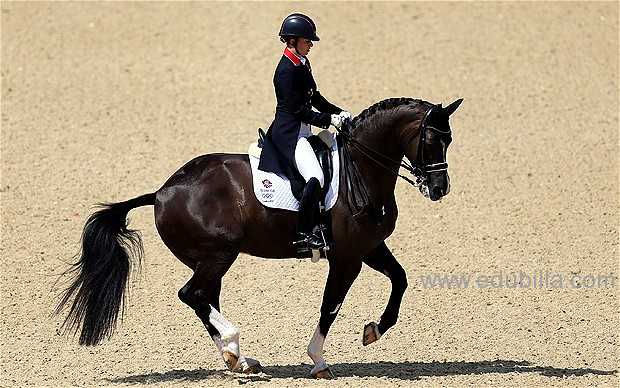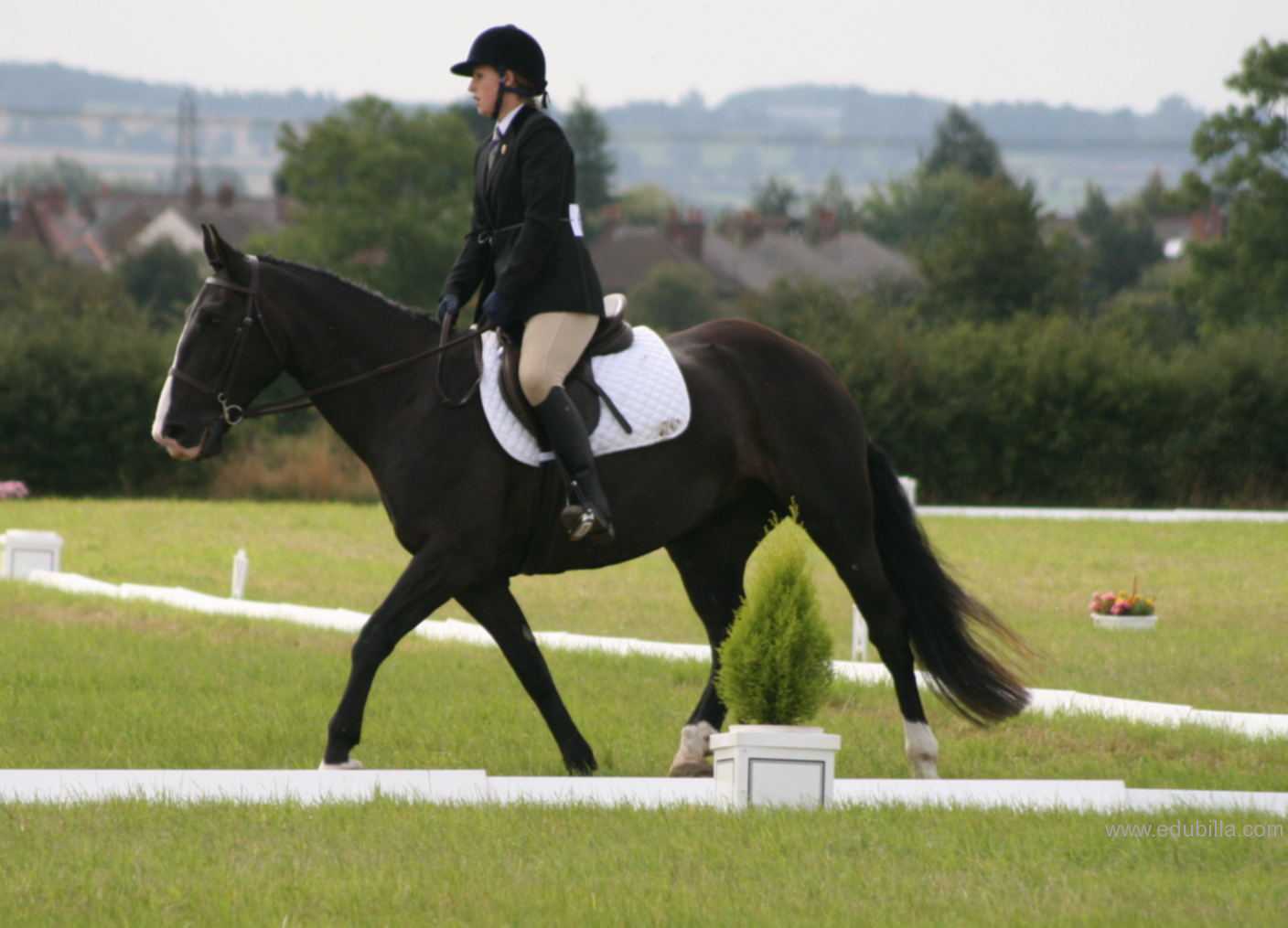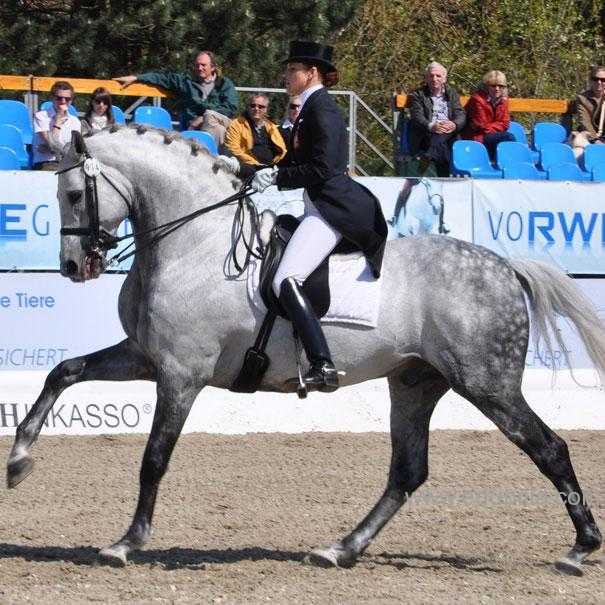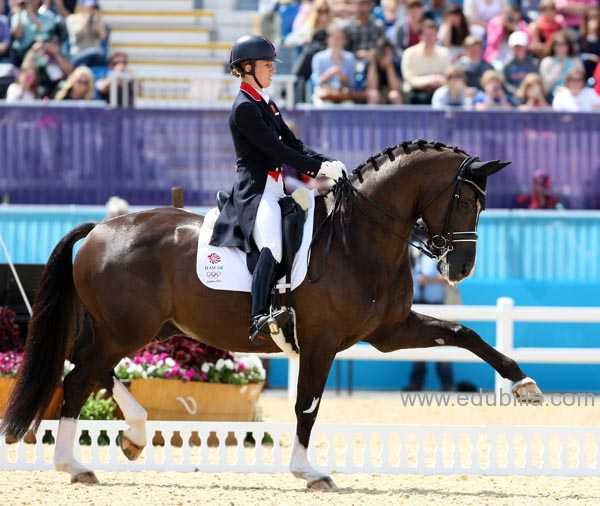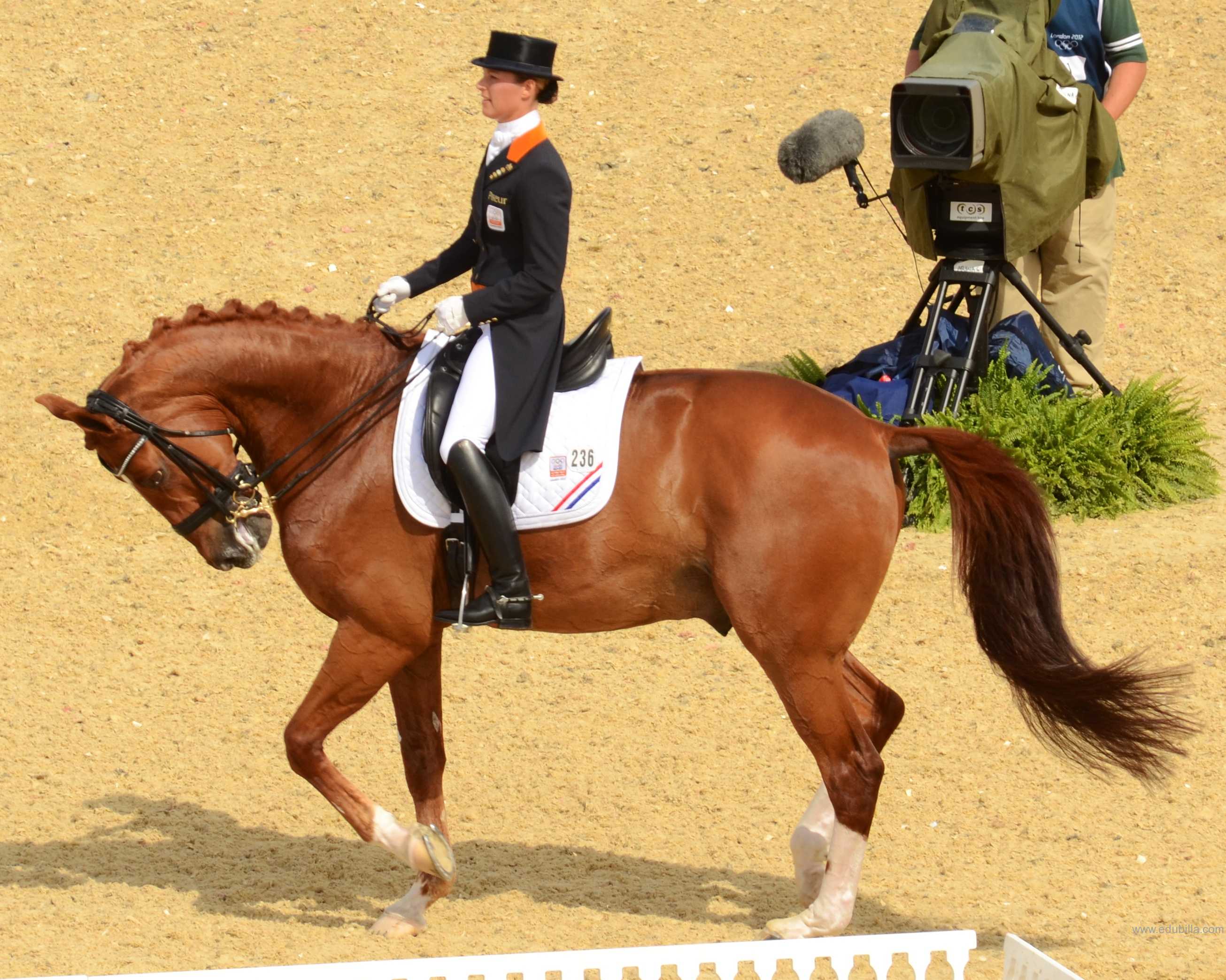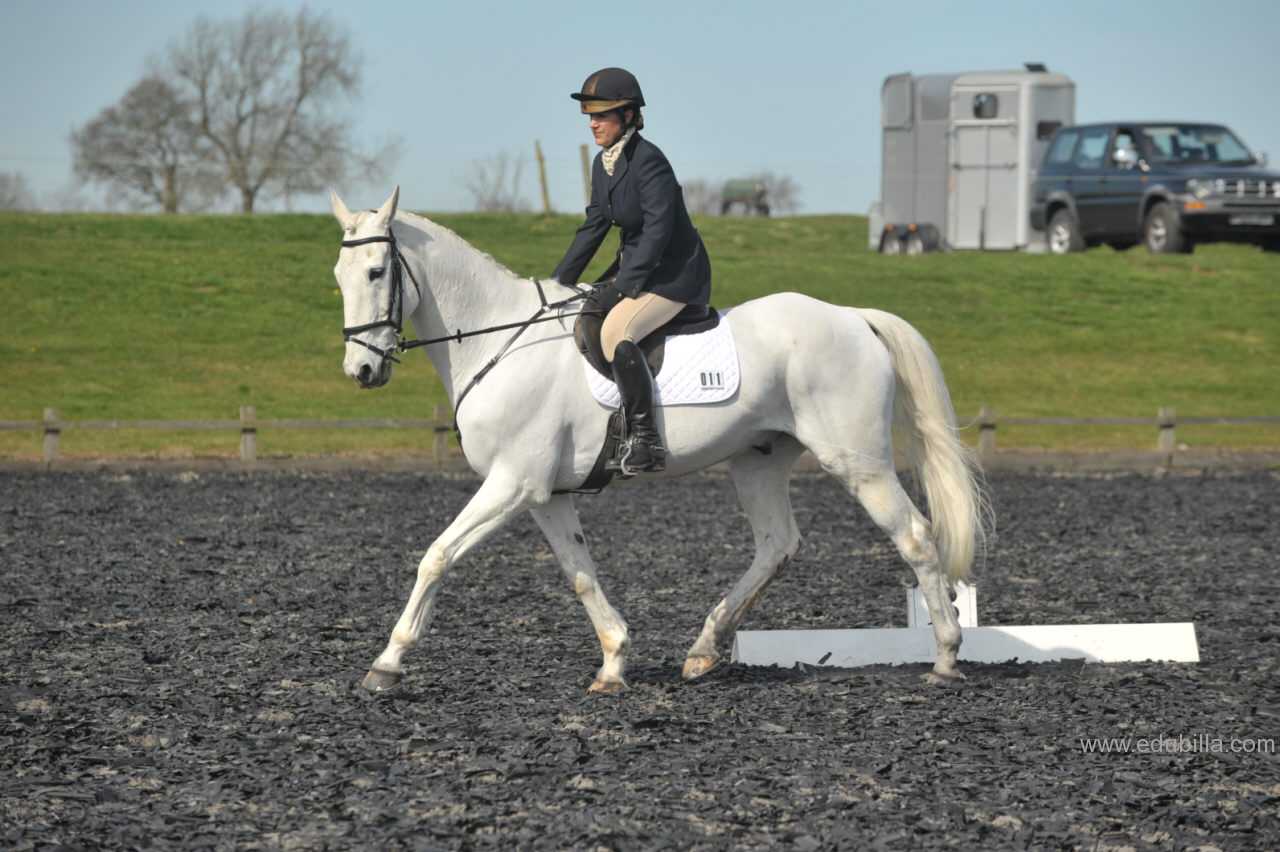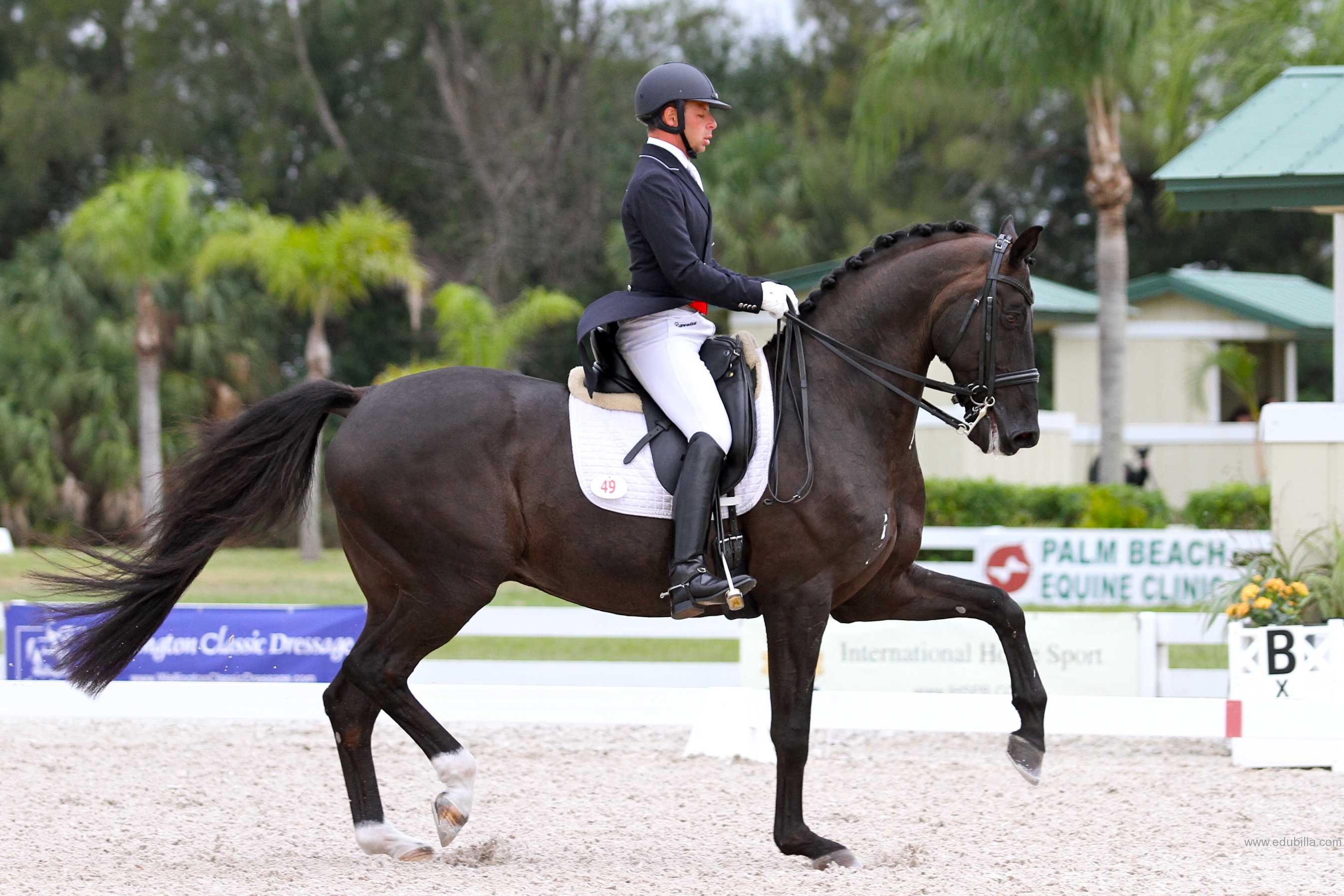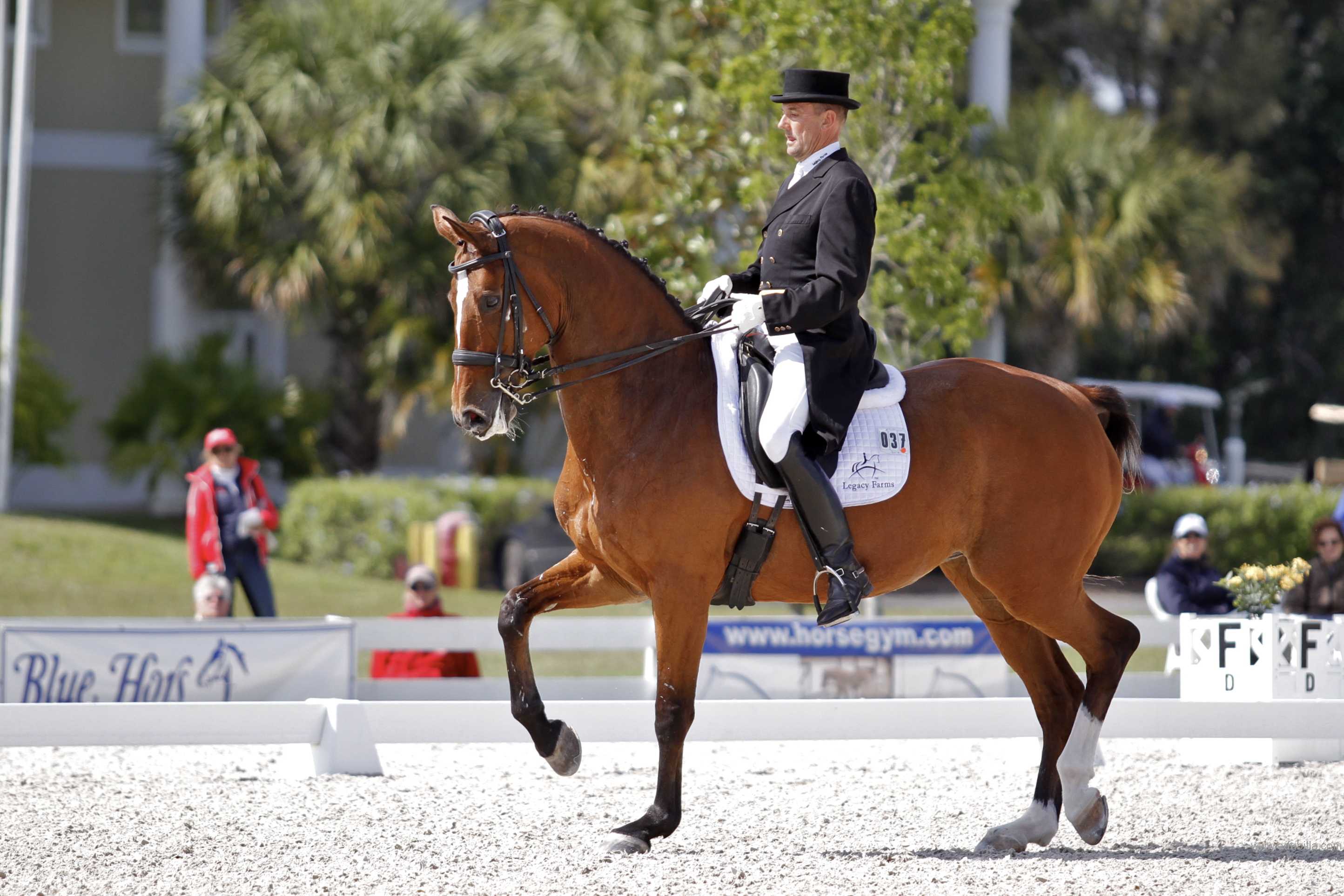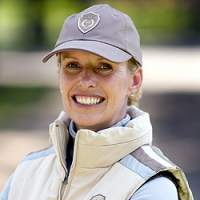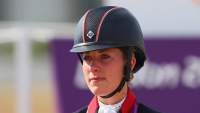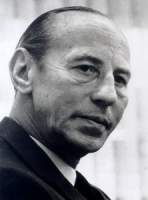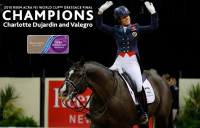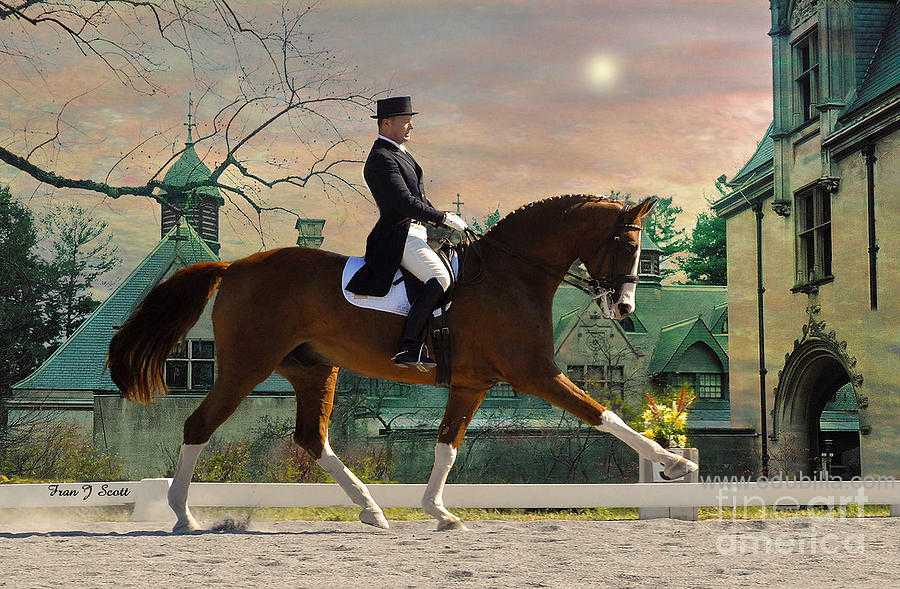
Overview Of Dressage
Dressage is a competitive equestrian sport, defined by the International Equestrian Federation as "the highest expression of horse training", where "horse and rider are expected to perform from memory a series of predetermined movements." Competitions are held at all levels from amateur to the World Equestrian Games. Its fundamental purpose is to develop, through standardized progressive training methods, a horse's natural athletic ability and willingness to perform, thereby maximizing its potential as a riding horse. At the peak of a dressage horse's gymnastic development, the horse will respond smoothly to a skilled rider's minimal aids. The rider will be relaxed and appear effort-free while the horse willingly performs the requested movement. Dressage is occasionally referred to as "Horse Ballet." Although the discipline has ancient roots in Europe, dressage was first recognized as an important equestrian pursuit during the Renaissance. The great European riding masters of that period developed a sequential training system that has changed little since then. Classical dressage is still considered the basis of modern dressage.
Game Rules
Dressage judging, both in the Dressage competition and the Eventing dressage phase is perhaps the most subjective of all the Olympic equestrian sports. FEI rules outline the standards for each gait, and element of the dressage test. Five judges, positioned around the outside of the 20mX60m (21.9 yds. x 65.6 yds.) dressage ring, give each element a score, usually from 0 to 10 with some elements being given greater weight by multiplying the score or 'co-efficient'.The ideal score is 100%.
Rules regarding the type of tack and dress that may be used are very strict. Competitors are disqualified if all four hooves land outside of the dressage arena, the horse refuses to perform for over 20 seconds, or horse or rider falls. Penalties are given to riders who go off track, do not salute properly and other minor infractions. These are deducted from the overall score. At the Olympic level penalties of this type are rare.
Detailed Dressage Rules Can Be Downloaded From Documents
Equipments Need For Dressage
Bit:
The metal mouthpiece on a bridle, to which the reins are attached.
Blinkers:
The flaps on a bridle which stop a horse from seeing backwards or sideways (unautorized in competition).
Breeches:
Trousers worn specifically for riding.
Bridle:
A harness that fits around a horse's head, holding the bit.
Hunting Stock:
A broad band worn around a rider's neck.
Saddle:
The seat for the rider on the back of a horse.
Spur:
A pointed device attached to a rider's boot heel and used to encourage a horse.
Whip:
A long, thin, hand-held device used to encourage a horse.
History Of Dressage
The long and colourful traditions of Dressage go as far back as ancient Greece. Dressage, the highest expression of horse training, is considered the art of equestrian sport and is used as the groundwork for all other disciplines.
Trained for battle:
Two thousand years ago, the ancient Greeks recognised that if rider and horse were to survive in battle, complete cooperation was necessary between the pair and developed Dressage as a method to train the horses for war. A horse’s ability to move quickly from side to side, burst into a gallop or change direction immediately were all considered vital skills.
Modern Dressage:
With the disintegration of Ancient Greece, the art of riding slowly fell into oblivion, until its revival during the Renaissance period. In the 18th century, classical Dressage reached its peak with the creation of the world-famous Spanish Riding School in 1729 in Vienna, and laid the basis of the modern discipline. More recently and with unprecedented success, the freestyle to music test was introduced and has since become an integral part of Dressage, making its Olympic début in Atlanta 1996. Freestyle is the pinnacle of Dressage execution and when it works, the result is magic.
Olympic history:
Equestrian sports featured on the Olympic programme of the Paris Games in 1900, with jumping events, and were then withdrawn until the 1912 Games in Stockholm. Since then, this sport has been on the Olympic programme with remarkable regularity.
Until 1948, only men competed in the events, as the riders had to be officers. This restriction was lifted in 1951, and, since the Helsinki Games in 1952, women have competed with men in the mixed events. They competed first in dressage, then gradually in the other equestrian events.
At the 2008 Olympic Games in Beijing, the Netherlands’ Anky van Grunsven confirmed her talent by winning gold for the third consecutive time in the individual dressage event. Her titles total eight medals - three gold and five silver. She is joined by Germany’s Isabell Werth (five gold medals and three silver) and Reiner Klimke (six gold and two bronze), who have also won eight medals.
Origin Of Dressage
Dressage dates back to classical Greek horsemanship and the military who trained their horses to perform movements intended to evade or attack the enemy whilst in battle. The earliest work on training horses was written by Xenophon, a Greek Military Commander born around 430 BC.
The Civilization of Horses:
Although it is not known exactly when the first horse was ridden, horses have been a part of human’s history for centuries. Ancient horses, smaller than today’s breeds, were used to pull wheeled vehicles in the valleys of ancient Syria and Egypt around 1500 BC. The first horseman’s manual was written in about 1300 BC, when horses were mainly used to pull chariots. A system of training horses was first documented by the Greek writer Xenophon, as horses had to be obedient and maneuverable.
Early Dressage Horses:
Heavy horses carried the knights of the middle ages in full armor. As modes of warfare changed, the type of horse changed with it, giving way to the lighter horse used for the cavalry. The hot blooded breeds, such as the Arabian and Thoroughbred, were introduced to add swiftness and greater maneuverability to the cold blooded, heavy horses of the armored knights. The resulting “warmbloods” formed the basis for most of the breeds most commonly successful in dressage today.
Development of Dressage:
Dressage has existed for many centuries in the form of training horses for competition. There is even some evidence that some of the maneuvers used in dressage were developed by the ancient Greeks. However, it wasn’t until the Renaissance that dressage flourished. As horsemanship became an art, the first riding school was set up in Naples in 1532 by Federico Grisone, a Neapolitan nobleman. As the horses performed intricate movements, it was from his academy that the modern form of dressage evolved. It wasn’t until 1735 that the Spanish Riding School, geared toward the fashionable nobility, began in Vienna and replaced an earlier riding school established in Versailles in the 16th century. Today, the Spanish Riding School is one of the greatest in the world, where classical dressage movements are still taught and performed.
Nearly 30 years later, the French Cavalry set up a riding school in Saumur. The Cadre Noir, as the group of officers was known, was renowned for their dashing riding across the country and in the art of dressage. It has greatly contributed to dressage over the past two centuries, as the French technique uniquely employs lighter and more humane techniques.
First Dressage Organisation:
The first Dressage organisation in the UK was the British Horse Society Dressage Group founded in 1961 that held 8 competitions in its first year with just 123 members. British Dressage was formed in 1998 as the governing body of dressage in the UK and today has over 13,000 members, more than 10,000 registered horses and runs 2,000 days of dressage competitions at venues around the UK throughout the year.
popularity:
Today Dressage is a popular equestrian sport in many countries and has developed into the fastest-growing Olympic equestrian sport.
Governing Bodies
International Federation for Equestrian Sports:
The International Federation for Equestrian Sports (FEI) is the international governing body of equestrian sports.
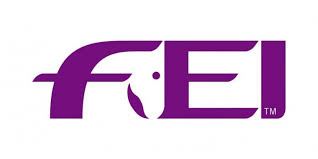
The FEI headquarters are in Lausanne, Switzerland. An FEI code of conduct protects the welfare of the horses from physical abuse or doping.
History of FEI:
The FEI was formed in 1921 with the joining of the national organizations of Belgium (BEL), Denmark (DEN), France (FRA), Italy (ITA), Japan (JPN), Norway (NOR), Sweden (SWE) and the United States of America (USA). Today, there are 132 National Equestrian Federations affiliated with the FEI.
Events:
Olympic and Paralympic Games
FEI World Equestrian Games
World Cup:
-Dressage World Cup
-Show Jumping World Cup
-World Cup Driving
-Vaulting championships
World, continental and regional championships
To Visit FEI Click Here
Awards Related To Dressage
The Illinois Dressage and Combined Training Association Award:
Beginner Novice Green Horse Award:
MThis award is for horses with USEA Beginner Novice scores that do not qualify for the Adult Amateur or Young Rider divisions because the rider has competed at or above the Training level in the past 5 years. The horse may qualify for other awards at the recognized level with a different rider. The points earned at this level will not count towards Horse of the Year points or Rider of the Year points. The horse may not have competed above USEA Novice level at any time.
Novice Green Horse Award:
This award is for horses with USEA Novice scores that do not qualify for the Amateur or Young Rider divisions because the rider has competed at or above the Preliminary level in the past 5 years. The horse may qualify for other awards at the recognized level with a different rider. The points earned at this level will not count towards Horse of the Year points or Rider of the Year points. The horse may not have competed above USEA Training level at any time.
Sample Documents Of Dressage
-Andre Agassi

